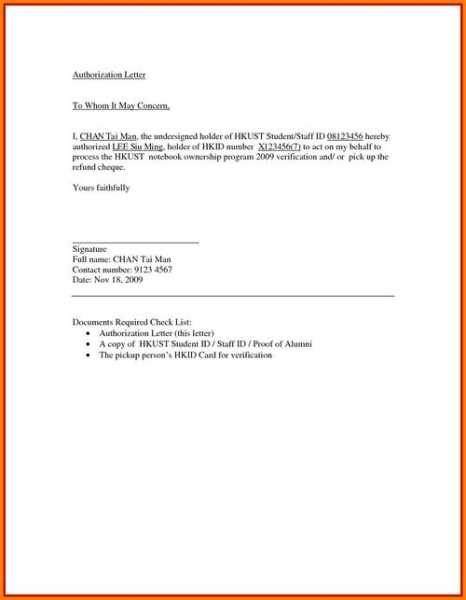This guide provides a comprehensive overview of authorization letters, covering their purpose, structure, and key components. It offers practical tips for drafting effective authorization letters in English, ensuring clarity and legal compliance.
In the realm of legal and business transactions, the concept of an authorization letter holds significant importance. An authorization letter, also known as a power of attorney letter, is a written document that grants someone the authority to act on behalf of another person. This letter is a critical tool in various situations, such as when someone is unable to attend an event, sign a document, or conduct business on their behalf. In this article, we will delve into the intricacies of an authorization letter, focusing on its definition, types, components, and legal implications, all while using English terminology.

Definition and Purpose of an Authorization Letter
An authorization letter is a formal document that authorizes one individual (the agent) to act on behalf of another individual (the principal) in specific legal or business matters. The principal grants the agent the power to make decisions, sign documents, and perform other actions that would typically require the principal's presence or consent.
The primary purpose of an authorization letter is to ensure that the agent has the legal authority to act on the principal's behalf, thereby minimizing the risk of fraud or unauthorized actions. It serves as a written confirmation of the principal's consent to the agent's actions.
Types of Authorization Letters
There are several types of authorization letters, each serving a specific purpose:
1、General Power of Attorney (POA): This type of authorization letter grants the agent broad authority to act on the principal's behalf in various matters, including financial transactions, legal issues, and personal decisions.
2、Special Power of Attorney (SPA): A special POA is more limited in scope and authorizes the agent to perform specific tasks or make decisions on the principal's behalf within a defined period or for a particular transaction.
3、Durable Power of Attorney (DPOA): This type of POA remains effective even if the principal becomes incapacitated or unable to make decisions. It is often used in estate planning or when someone anticipates potential future incapacitation.
4、Springing Power of Attorney (SPA): A springing POA becomes effective only when certain conditions are met, such as the principal's incapacity or the occurrence of a specific event.
Components of an Authorization Letter
An effective authorization letter should contain the following components:
1、Header: Include the date, the principal's and agent's names, and contact information.
2、Introduction: Clearly state the purpose of the letter and the scope of the agent's authority.
3、Specific Powers Granted: List the specific actions the agent is authorized to take on the principal's behalf.
4、Duration: Specify the period during which the authorization is valid.
5、Limitations: Clearly define any limitations or restrictions on the agent's authority.
6、Revocation Clause: Include a statement that the authorization can be revoked at any time by the principal.
7、Signature: Both the principal and the agent must sign the letter to make it legally binding.
Legal Implications
It is crucial to understand the legal implications of an authorization letter:
1、Liability: The agent is legally responsible for any actions taken on the principal's behalf, and the principal can be held liable for the agent's actions.
2、Fraud: An authorization letter can be used to commit fraud if the agent misrepresents their authority or if the principal's signature is forged.
3、Compliance: The agent must comply with all applicable laws and regulations when acting on the principal's behalf.
4、Documentation: The principal should maintain a copy of the authorization letter and any related documents for their records.
Conclusion
An authorization letter is a vital instrument in legal and business transactions, providing a clear framework for the principal-agent relationship. By understanding the types, components, and legal implications of an authorization letter, individuals and organizations can effectively manage their affairs and minimize risks associated with delegation of authority. Whether drafting a general power of attorney or a special power of attorney, it is essential to ensure that the letter is comprehensive, legally sound, and properly executed to safeguard the interests of all parties involved.
相关阅读:
1、Mastering the Art of Writing a Bid Authorization Letter: A Step-by-Step English Guide
2、Mastering the Personal Power of Attorney: An In-Depth English Guide to Format and Content
3、Essential Guide to Writing English Authorization Letters: Format, Content, and Key Points
5、Navigating Authorization Letters: The Ultimate Guide to English Power of Attorney Documents
Mastering the English Personal Customs Clearance Authorization Letter: Your Ultimate Guide
Mastering the Art of Writing a Personal Authorization Letter: Your Ultimate English Template Guide
Mastering the Art of Writing a Personal Authorization Letter: Your Ultimate English Template Guide
Mastering the Art of Crafting a Personal Authorization Letter: Your Ultimate English Template Guide
Mastering the Art of Writing a Personal Remittance Authorization Letter: Your Ultimate English Guide
Mastering the Art of Writing a Purchase Authorization Letter: Your Ultimate English Template Guide











